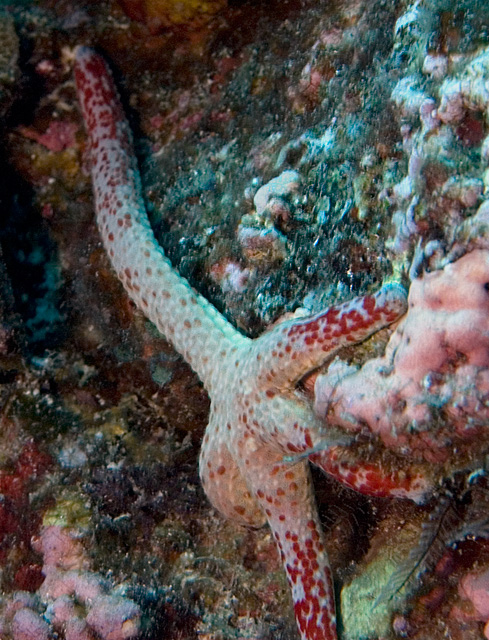Frank O
Contributor

What's going on with this sea star (shot last week in about 60 ft of water off Kona, Hawaii)? Is this a regeneration thing?
Welcome to ScubaBoard, the world's largest scuba diving community. Registration is not required to read the forums, but we encourage you to join. Joining has its benefits and enables you to participate in the discussions.
Benefits of registering include

archman:I am assuming that it is a Linckia-type thing, and that absurdly long arm was at one point the "comet's tail" during a body fragmentation event.
Which from the animal's size, appears to have been a long time ago.

